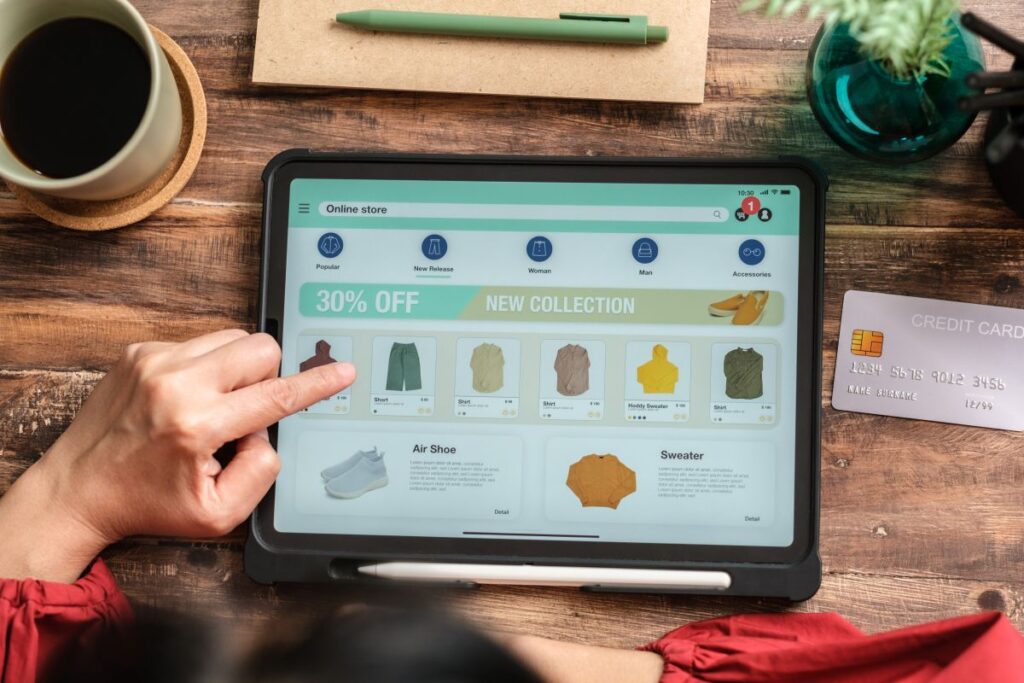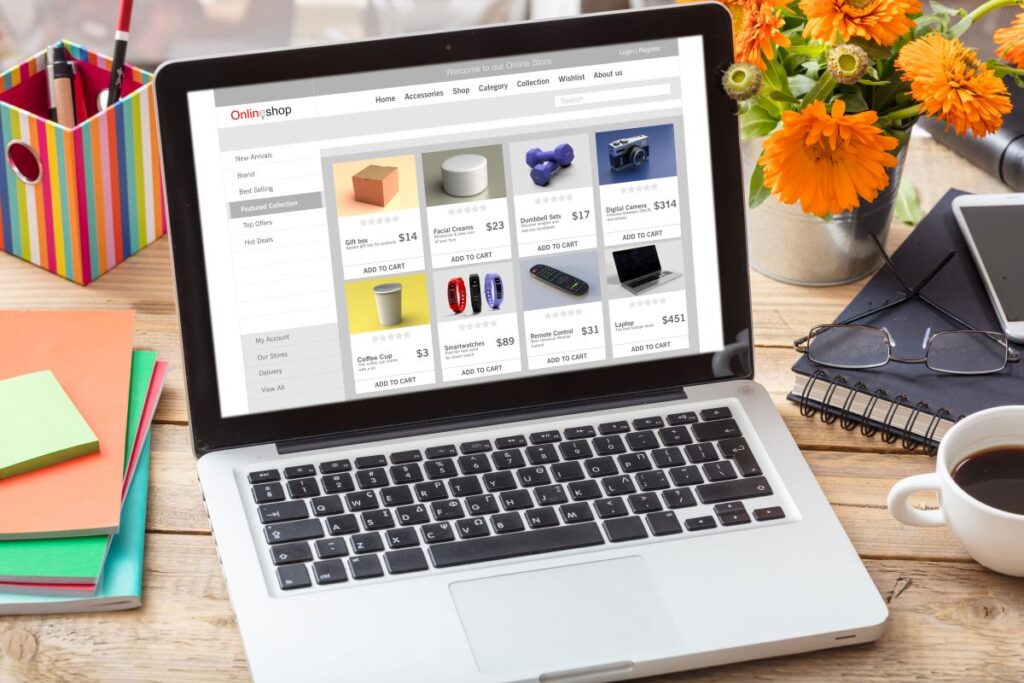A Product Detail Page (PDP) is one of the most essential parts of any ecommerce store. It’s the place where shoppers examine a product closely, evaluate its features, and decide if they trust the brand enough to make a purchase.
The PDP serves as the transition point between interest and action. The Baymard Institute reports that a large portion of online shopping carts – around 68% – are abandoned due to weak product information. Issues like these create confusion and hesitation, which quickly push shoppers away.
A well-structured PDP prevents this by presenting details in a way that strengthens trust and supports decision-making.
What Is a PDP in Ecommerce?
A PDP is a dedicated webpage that displays detailed information about a specific product.
It includes everything shoppers need to make informed decisions, such as titles, descriptions, pricing, images, reviews, availability, and calls to action. The PDP essentially becomes a digital salesperson guiding customers through the evaluation stage.
While category pages allow browsing, the PDP focuses solely on a single product. It answers questions, eliminates uncertainty, and provides convincing reasons to click “Add to Cart.”
A strong PDP reduces hesitation, boosts trust, and directly improves the store’s revenue.
Core Elements of an Effective PDP

A successful PDP contains multiple elements that work together smoothly. Each component influences how easily shoppers understand the product and how confident they feel before making a purchase.
Clear and Descriptive Product Title
A well-written title helps shoppers and search engines understand the product immediately. It should highlight the product name and defining characteristics in a natural, readable way.
A strong title avoids vague language and communicates exactly what the shopper is viewing.
High-Quality Images and Visuals
Images replace the physical experience that customers miss online. Clear visuals allow them to inspect details, understand scale, and imagine how the product fits their needs.
Multiple angles, close-ups, lifestyle images, and videos increase engagement and reduce uncertainty.
Detailed and Persuasive Product Description
A description should explain both features and benefits.
Features tell what the product is, while benefits explain how it improves the customer’s situation. A compelling description creates clarity, builds trust, and aligns expectations with reality.
Specifications and Technical Information
Some shoppers need measurements, materials, capacities, ingredients, or compatibility details.
Organized technical information helps eliminate confusion and prevents complaints or returns due to misunderstandings.
Transparent Pricing and Availability
Customers want immediate clarity about cost, stock status, and delivery expectations. Simple, transparent pricing and clear availability information encourage shoppers to move forward confidently.
Strong Calls to Action
Buttons like “Add to Cart” must stand out visually and be easy to find.
Shoppers should never search for the next step. Clear calls to action guide users smoothly through the buying process.
Trust Elements and Social Proof
Reviews, ratings, customer photos, return policies, and warranty information help customers feel secure. These elements reduce anxiety and show shoppers that previous buyers had positive experiences.
FAQs and Supportive Information
A set of common questions helps address concerns that may not be covered in the main description. Answering these common doubts keeps shoppers on the page and reduces hesitation.
Why PDPs Are Critical for SEO
PDPs contribute heavily to how well an ecommerce site ranks in search results. Their structure, content quality, and technical setup influence search visibility and organic traffic.
Long-Tail Keyword Opportunities
PDPs naturally target specific product-related keywords. These keywords often have high buyer intent, making PDPs ideal for capturing motivated shoppers. Detailed content increases relevance and improves ranking potential.
Improved Crawlability and Indexing
Search engines use the structure of the PDP to understand the product’s topic and purpose.
Proper headings, descriptive content, and organized information help crawlers index the page more accurately.
Internal Linking Impact
Links to related products, categories, and complementary items help distribute authority across the site.
These internal pathways assist search engines in exploring more pages and understanding how products are grouped.
Better Click-Through Rates
Compelling titles, structured data, and accurate meta descriptions increase the likelihood that shoppers click on the product in search results. Higher engagement signals positive user interest.
Schema Markup Benefits
Structured data provides extra information about the product to search engines. Markup enhances visibility by allowing price, reviews, and availability to appear in rich search results, which makes the listing more appealing.
Common PDP Mistakes That Hurt Conversions

Avoiding common mistakes helps improve performance instantly. The following errors frequently weaken PDP effectiveness:
- Generic or vague product descriptions
- Low-quality or limited images
- Cluttered layouts with poorly organized information
- Inconsistent specifications or incorrect data
- Absence of reviews or trust elements
- Missing return policy or unclear guarantees
- Weak calls to action
- Lack of mobile optimization
Best Practices for High-Converting PDPs
Certain practices consistently create higher engagement and stronger conversions on PDPs. These best practices enhance clarity, reassure shoppers, and guide them effortlessly through the decision-making process.
- Write Benefit-Focused Descriptions: A strong description goes beyond listing features and helps shoppers understand how the product adds value. It should answer the most important questions customers may have and reflect the product’s real strengths.
- Optimize Visual Content: Clear, bright, and detailed images keep customers interested. Fast-loading visuals are essential, so compression is important. Videos or 360-degree displays can increase engagement and reduce doubts.
- Organize Product Variants Clearly: When size, color, or style variations exist, shoppers must understand their options without confusion. A clean and intuitive layout helps customers choose the right variant quickly.
- Provide Transparent Pricing and Shipping Details: Information about shipping costs, delivery estimates, taxes, and fees helps prevent unpleasant surprises. Transparency builds trust and reduces cart abandonment.
- Highlight Reviews and Social Proof: Shoppers rely heavily on real experiences shared by other buyers. Displaying reviews prominently helps reassure customers that the product performs as expected.
- Ensure Fast and Mobile-Friendly Performance: A slow or poorly formatted PDP pushes mobile users away. Mobile responsiveness, fast load times, and clean layouts dramatically influence conversion rates.
Conclusion
A Product Detail Page is one of the most influential components of an ecommerce store. It shapes the customer’s understanding, builds trust, and drives the final buying decision.
When structured clearly, supported by strong visuals, and optimized with persuasive content, a PDP becomes a powerful conversion engine. It also plays a vital role in SEO by targeting specific keywords, improving search visibility, and enhancing the brand’s presence in rich results.
Beginners who learn to optimize PDPs early gain an advantage as their store grows, because a strong PDP supports both customer satisfaction and long-term sales performance.








